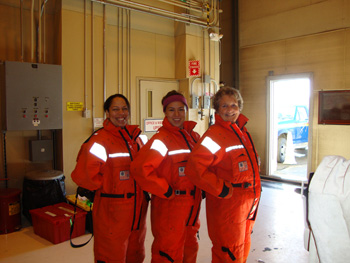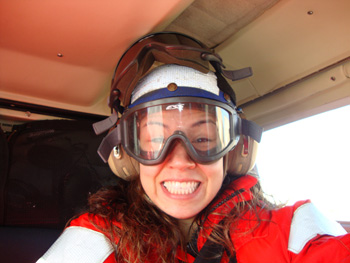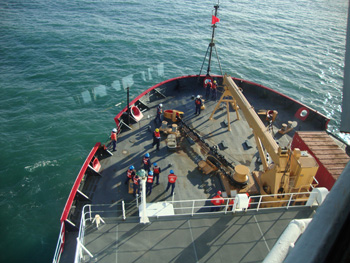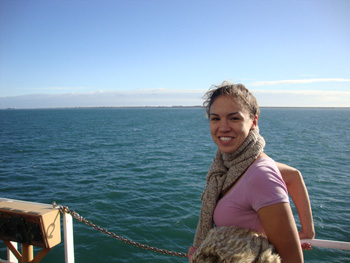September 6thThe Inupiaq village of Barrow, Alaska (aka Utqiagvik or Ukpeagvik) sits 320 miles north of the Arctic Circle, on a point that lies between the Chukchi and the Beaufort Seas. It is the northernmost community in the United States, a prime hunting spot for subsistence whaling since the Bowhead whales migrate past this point. About four to five thousand people now reside in Barrow, a place that has grown and cultivated an amalgamation of European and Inupiaq cultural values. Named in 1825 after the proponent of Arctic expeditions and British Admiralty Sir John Barrow, the village of Barrow promulgates the strength of the whaling tradition, a continuing center of Northern culture that continues to strengthen Inupiaq and community values. In the spring, families head out on snowmachines and sleds onto the shorefast ice to set up white canvas tents on the edge of the open lead for the biannual Bowhead whale migration. Similarly, the fall whaling season brings people together both on the open ocean and on land in the community. The whaling seasons bring many people together, working in unison and putting everything in their lives aside for these few weeks.
I woke up from the honk of the pickup truck since my alarm failed to go off a half hour before. It was 10 minutes until our 7am science briefing was to begin at the Barrow Arctic Science Consortium in Barrow, AK so I threw my bags outside and jumped in the truck. After getting briefed on the logistics of the day, our 27-member science crew prepared for the helicopter ride that would take us to the 450 foot-long and six-story high icebreaker Healy. After taking 2-3 hours to adjust to the rocking of the ship, I joined the crew on the bow to observe the pulling of the anchor. The anchor alone weighs approximately 12,000 lbs! On a conventional ship, the amount of chain released into the ocean for anchoring is about two to three times the depth of the water. However, in the Arctic environment, Healy released about five-times the water depth of 20 meters. After a half-hour of pulling up the chain and spotting four whales, we were ready to sail! Our first dinner on the ship included roast beef, mashed potatoes, corn and rolls. We even had pistachio pudding and jello for dessert. Afterwards the science crew mustered in the science lounge for the first official meeting. The chief scientist, Bob Pickart, discussed our route and our overall science mission, then a whole host of scientists and graduate students offered thoughtful introductions and briefs on projects to be carried out aboard the ship.
In the evening, we stood out on the deck to observe the ocean and to watch the sun go down over the ocean horizon. I went to bed and the boat rocked me to sleep after a couple of hours of feeling seasick. In attempting to comprehend the plethora of information acquired in the last sixteen hours, I wish I could say that I fully grasp the role of each member of the science party. But perhaps the most appropriate saying for my present situation is “the more you learn, the more you find out what you don’t know.” As the preacher reiterated at last Sunday’s service at New Beginnings in Barrow, “one day at a time.” The next twenty-three days will bring twenty-three opportunities to engage in exciting scientific endeavors aboard the Healy. I look forward to the trip ahead. Last updated: September 29, 2010 | |||||||||||||||||||||
Copyright ©2007 Woods Hole Oceanographic Institution, All Rights Reserved, Privacy Policy. | |||||||||||||||||||||




